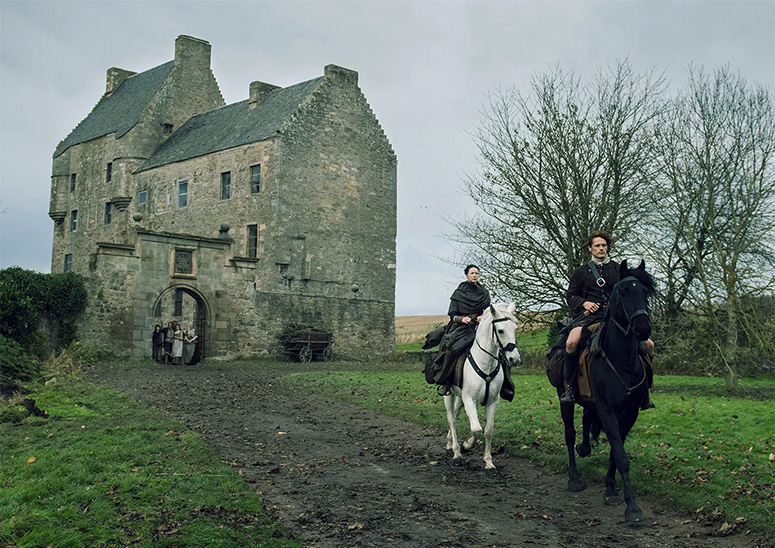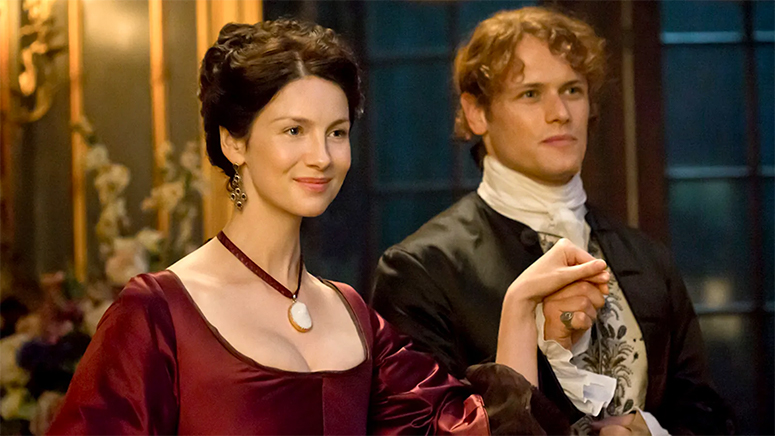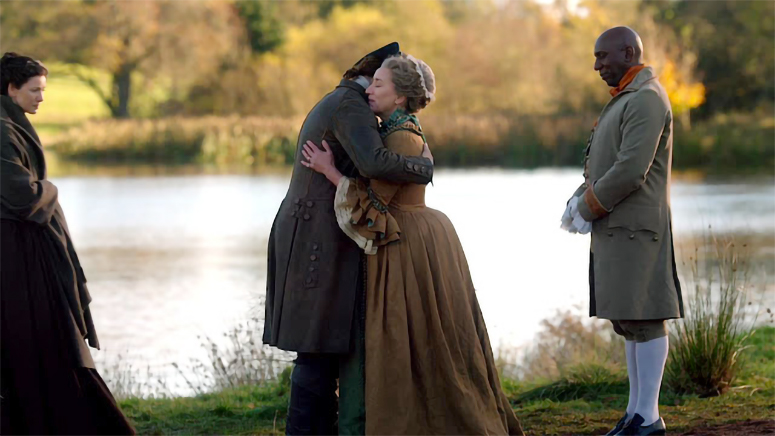Freedom and whisky
Unlike with other fave extended Netflix series such as Breaking Bad, Better Call Saul, The Blacklist and Peaky Blinders, I couldn’t quite get into a torrid binge-watching engagement through all the seasons of Outlander, which continues to hold me in thrall, although I caught up with its enchantments rather late.
The series started in 2014 and has had six seasons involving scores of lengthy episodes. But current work and sports extravaganzas like the US Open confined me to occasional nighttime viewing of these adaptations for television of Diana Gabaldon’s best-selling historical drama novels.
The first attraction was its setting: Scotland, a country dear to my heart for memorable personal experiences, lovely landscapes and lore, and varieties of single malt whisky. Then there’s the narrative linchpin of time travel, for which I’ve always been a sucker.

Add fascinating characters, an intelligent script, good actors and top-rate production, and I’ve remained hooked. The chemistry between attractive leads Caitriona Balfe and Sam Heughan, with frequent instances of tantalizingly graphic erotic scenes, have been additional pluses.
The willowy Claire, a British combat nurse in 1945 who reunites with her husband after the war, tours Scotland with him on a second honeymoon. Drawn by fate, she walks through a standing stone in one of the ancient, sacred circles on a hill overlooking Inverness. She disappears from the present, finding herself an “outlander” in the tumultuous Scottish Highlands in the year 1743.
Through endless physical peril and hardships, as may be imagined in a yet uncivilized environment two centuries before her familiar matrix, Claire can’t help but be thrown into a romance with the Scottish laird (lord) and indomitable, indestructible warrior Jamie. To save her, they are forced to marry, and gradually develop a union of hearts and souls for the ages.

The feisty Englishwoman whose knowledge of healing gets her branded as a witch becomes his “Sassenach” — for foreigner, a term Scots use disparagingly for anything typically English, but which Jamie calls her as a term of endearment.
My fascination with the series grew with the welcome lessons on Scottish idiom and slang. As in “wee dram,” a “wee bairn” is a small child, just like “wee smout.” “Did ya ken that” is “Did you know that?” “Dinna ken” means “don’t know.” Often uttered is “dinna fash” for “don’t fret.” “Bannock” is bread. “Thrapple” is throat. A “stramash” is a disturbance. “Feart” means fright; a “keek” is a peep. “To swive” is to have sexual intercourse. One of the lines of dialogue that has become a memorable quote for Outlander fandom is the character Dougal Mackenzie’s “Well, I must admit the idea of grinding your corn does tickle me, but it’s not myself I’d be nominating for the position.” It refers to congress with a woman from behind.
As the Highlanders dare to challenge English domination, it comes to a head in the historic Battle of Culloden in April 16, 1746. Since Claire knows from history books that the imminently disastrous encounter will put an end to the Scots’ Jacobite cause — the attempt to reinstall “Bonnie” Prince Charlie’s father James to a multi-kingdom monarchy — she convinces Jamie that the Highlanders face a massacre against the Redcoats.

Their attempts to alter history are in vain, but Jamie is determined to soldier on for his Mackenzie clan. Now carrying his child, Claire is urged by Jamie to return to her time by passing through the stone again at Craigh na dun. She reappears in Inverness in 1947, reunites with her first husband Frank, gives birth to Jamie’s daughter Brianna, whom Frank raises as his own despite Claire telling him everything about her “lost years” in the distant past. They migrate to Boston where Frank teaches history, while Claire studies and becomes a surgeon. It is all of 20 years that she continues to mourn for her real love, Jamie, whom she assumes gave up his life in Culloden Moor.
As the show runners say of this award-winning series, they could well have Claire and Jamie reach a hundred years of age. In which case, we can keep enjoying traveling through time with them.
At this point I almost tired of the story, weighed down as it was by a few blah episodes that also suffered from the mercurial Jamie’s absence. But an episode in Season 3, titled “Freedom and Whisky,” perked up my interest anew. At a bar, Claire hears some Scots sing a famous line from Robert Burns’ poem “The Author’s Earnest Cry And Prayer”: “Freedom an’ whisky gang thegither tak aff your dram!”
Burns wrote the lengthy poem in 1786. Its 32nd stanza, as “Englishized,” goes: “Scotland, my old, respected mother!/ Though sometimes you moisten your leather,/ Till where you sit on heather-tops/ You lose your water,/ Freedom and whisky go together,/ Take off your dram!”
Claire recalls quoting the poem to Jamie, as part of her “knowledge of the future.” Archival research brings up a printer named A. Malcolm in Edinburgh who had published portions of Burns’ poem in 1765, when Burns was but six years old. It’s the clue that convinces Claire that A. Malcolm is Jamie’s new identity, and makes her decide, now as a widow, to return to the 18th century.
They do find each other, both a couple of decades older, but fresh for new adventures together, as well as for engaging in full nudity before fireplaces. I was hooked again. Although I turn squeamish before other graphic depictions, of extended torture and detailed scenes of surgery, and find outlandish the frequent deus ex machina configurations that keep reuniting everyone in strange new locations, as in the voodoo island of Trinidad and eventually, “America the Beautiful,” there is always something in Outlander that surprises me.

One is Jamie and Claire Fraser’s sojourn in his long-lost Auntie Jocasta’s prized River Run estate near Cape Fear River in North Carolina. My friend the author Danton Remoto was overjoyed to hear that his novel Riverrun shares a place name, if also fictional. It was another serendipitous turn we shared, as we had decades ago when we met up for lunch in Edinburgh.
New characters keep cropping up, including a wise Chinaman poet and a Colonel George Washington in the early 1770s. Terrible villains give us the chills. Daughter Brianna also transports herself through the stone, and joins her parents in occasional idyll at the Frasers’ Ridge estate in North Carolina (two centuries before the advent of one Michael Jordan). Cherokees and Mohawks are encountered.
Memorable quotes keep the script buzzing: “There’s always a war coming; it’s up to us to decide which one we’ll fight.” “Everybody needs a history, but it can’t be trusted as it’s a story.” “So much truth in fiction.” A lecturer in Harvard tells his students that it wasn’t Paul Revere who completed the ride to warn of the British coming, but one of his three companions, Samuel Prescott. He quips: “Paul Revere had a better publicist.” And takes a further dig at what he calls “fictional history,” adding: “I’m a historian, I pursue it, like a dog with a bone.” Then there’s the oft-repeated “There is the law. And there is what is done.”
I have yet to get through Season 6, but expect Jamie to join the American Revolution of the 1770s against the Redcoats. He will continue to uphold the Mackenzie clan motto: Luceo Non Uro (I shine, not burn).
A seventh season has been in the works, due out by yearend. Lessons in feminism, gender relations, homosexuality, physical and moral courage, parenthood, invaluable but complicated truths will also keep the intellectual content ripe for all generations. As the show runners say of this award-winning series, they could well have Claire and Jamie reach a hundred years of age. In which case, we can keep enjoying traveling through time with them.


